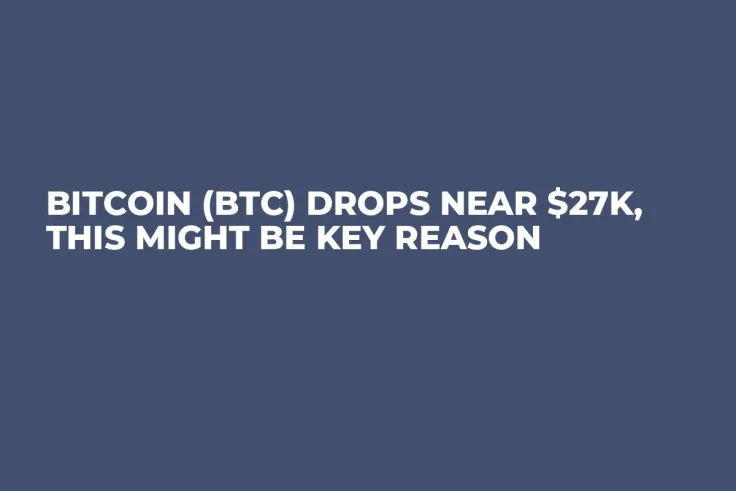
Disclaimer: The opinions expressed by our writers are their own and do not represent the views of U.Today. The financial and market information provided on U.Today is intended for informational purposes only. U.Today is not liable for any financial losses incurred while trading cryptocurrencies. Conduct your own research by contacting financial experts before making any investment decisions. We believe that all content is accurate as of the date of publication, but certain offers mentioned may no longer be available.
The Bitcoin (BTC) price briefly fell below the $27K mark early Wednesday as cryptocurrencies saw selling pressure. The lead cryptocurrency fell to lows of $26,978 before rebounding slightly to where it currently trades.
At the time of writing, BTC was down 3.09% in the last 24 hours to trade at $27,110. The drop follows after Bitcoin briefly recovered the $28,000 level over the extended holiday weekend.
The majority of cryptocurrencies traded in the red at press time as the crypto rebound seemed to be losing steam. Ethereum, Solana and Cardano saw losses of up to 3%.
The current price drop puts Bitcoin on course for its worst month since the FTX exchange went under in November last year. The lead crypto asset is also on track to have its first negative month since 2023. Presently, Bitcoin is down 7.3% for May.
The biggest cryptocurrency experienced an 84% increase in value between Jan. 1 and mid-April, momentarily reaching $31,000, but the rise has since fallen to 64%. A lack of liquidity and a restrictive monetary policy have tempered interest in cryptocurrencies.
Cryptocurrencies most recently decreased as traders assessed the implications of the U.S. debt-limit agreement, which Congress is rushing to adopt before June 5, the day by which the U.S. might default. If the deal is approved, there may be a flood of bill sales that might drain market liquidity.
Traders also considered the comments of top Fed officials, including Federal Reserve Bank of Cleveland President Loretta Mester, who stated that there was no compelling case to stop liquidity tightening.

 Dan Burgin
Dan Burgin Vladislav Sopov
Vladislav Sopov U.Today Editorial Team
U.Today Editorial Team